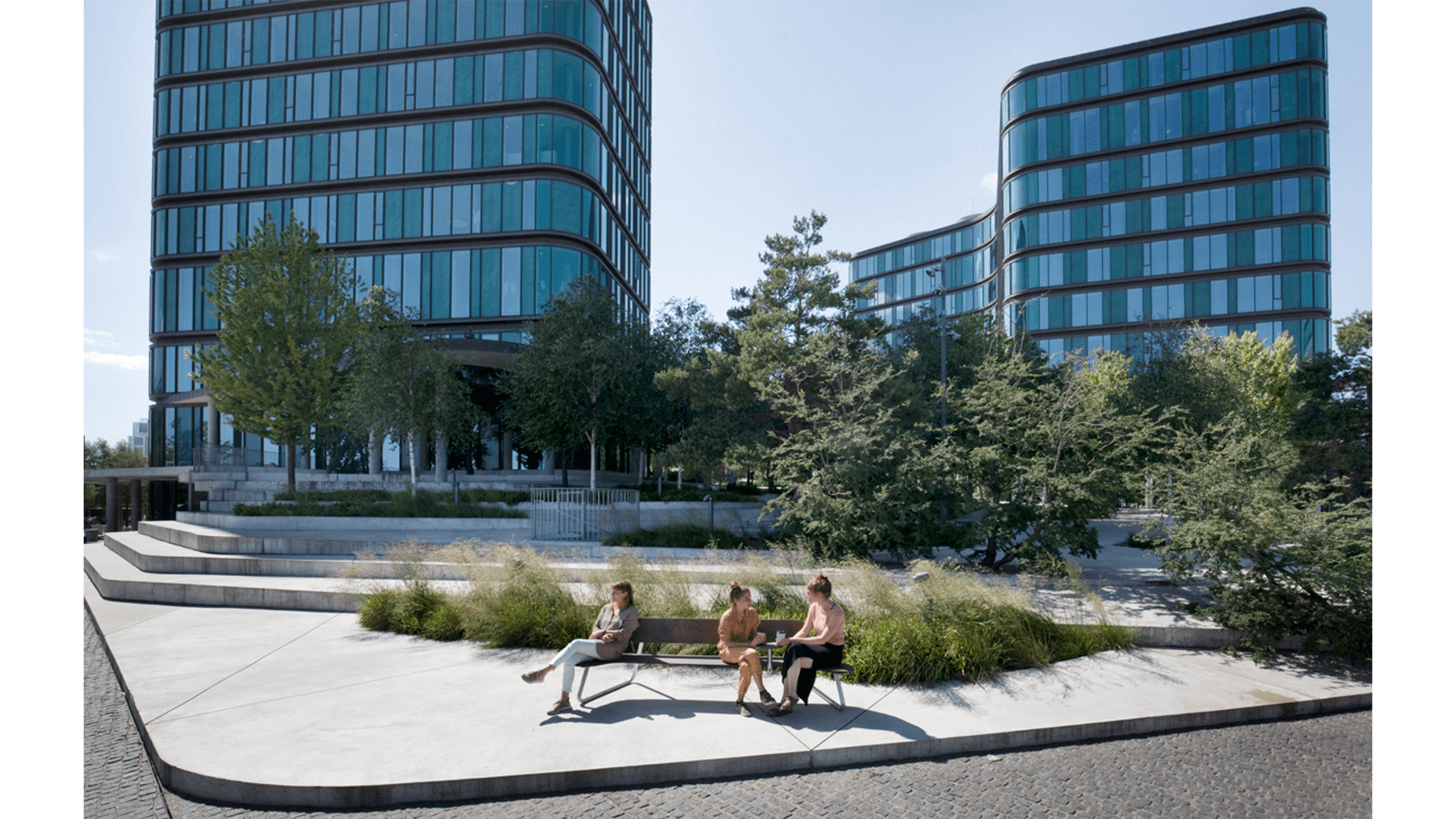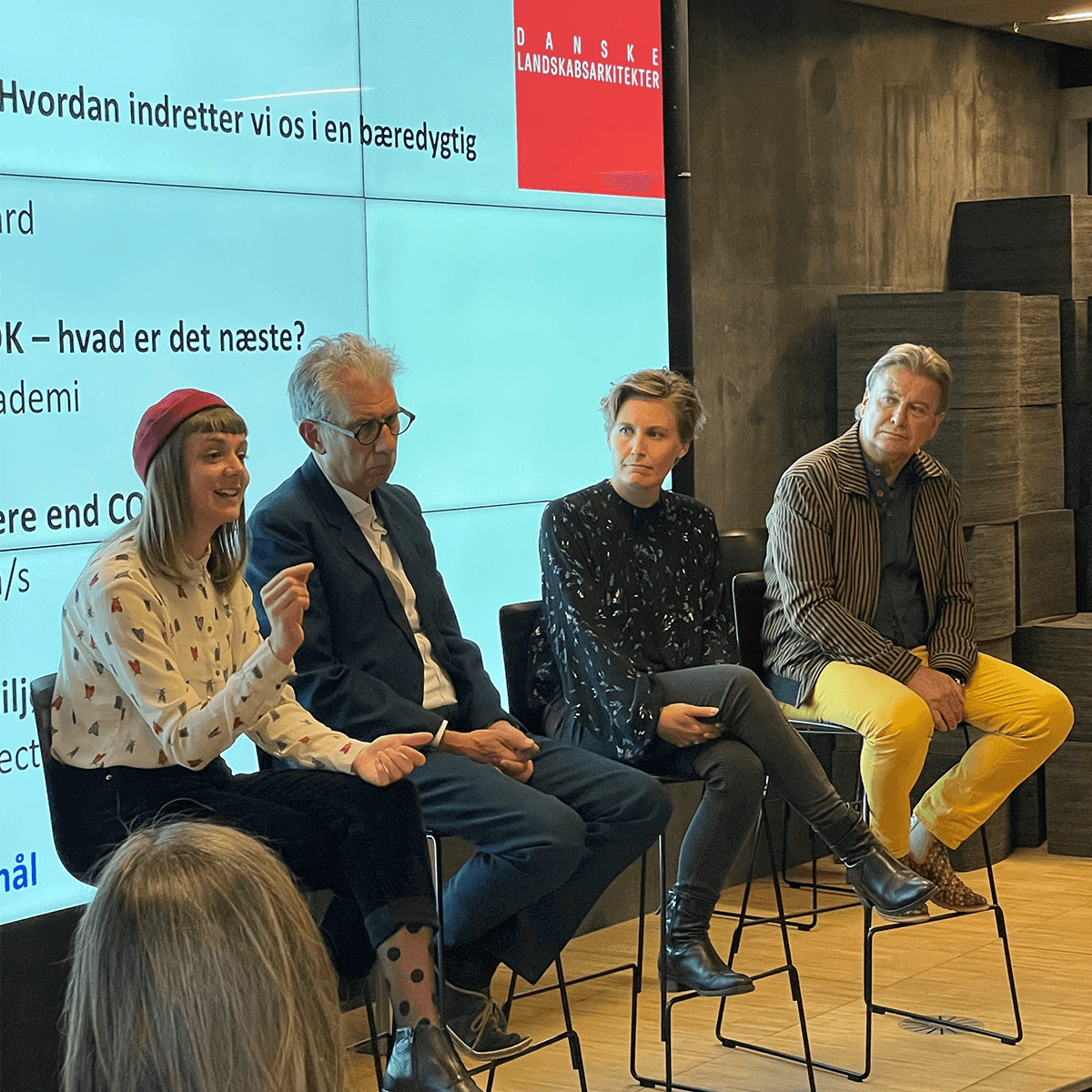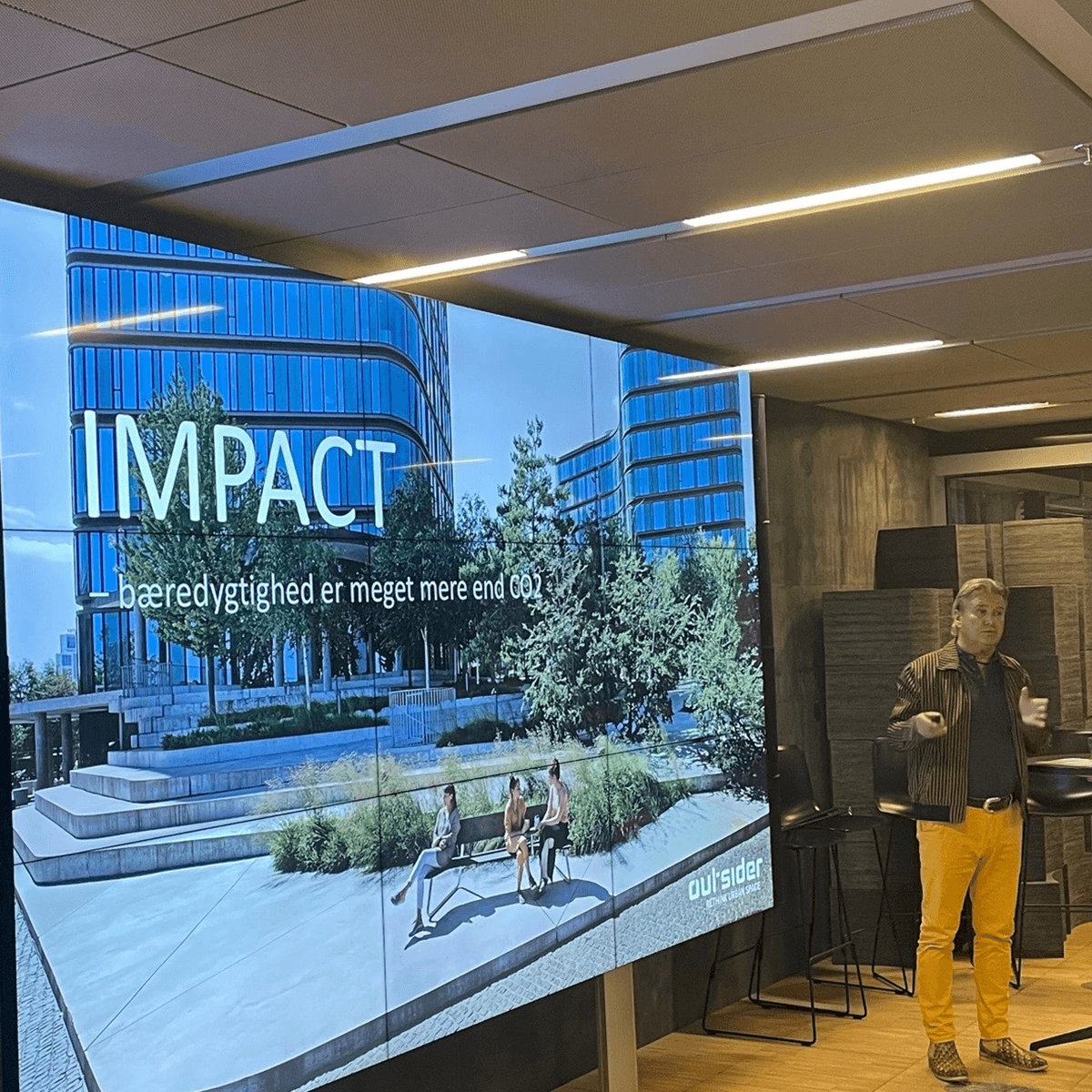How do we design the urban space in a sustainable way?

This question was explored at an inspiring open learn meeting, organized in collaboration with BLOXHUB and Danish Landscape Architects.
Designing the urban space in a sustainable way is not just a trend, but a necessity. Today we are witnessing a movement within the construction industry where the focus is shifting towards a sustainable approach to product development and production. But what does this mean for the design of our urban spaces? In 3 exciting projects presented at the open learn meeting, the focus was not only on changing the urban environment, but also on changing people’s behavior. This is the key to creating sustainable projects that really make a difference
Our contribution to the topic
Traditionally, CO2 measurements have been the primary metric for assessing sustainability. But at out-sider, we encourage you to think more broadly and include other important factors, such as ethics, aesthetics, use and climate impact. With our new dialogue-based model, we look at the overall impact (IMPACT) of a project based on the individual user situation.
The IMPACT model is an innovative approach to assessing sustainability that goes beyond CO2 measurements. It quantifies and indexes the overall four impacts: ethics, aesthetics, usage, and climate impact. This makes it possible to measure and compare results in a more nuanced way, facilitating communication about a project’s overall impact on society and the environment

Add to moodboard

Add to moodboard
Sustainable design of urban spaces: more than CO2 measurements
When we ask how the sustainability agenda affects the design of our urban spaces, the answer is far more complex than CO2 measurements. It is about creating aesthetically pleasing and ethically responsible urban spaces that encourage sustainable behavior. Through tools and a dialogue-based approach to urban space inventory, we can shape urban spaces that reflect our vision of a sustainable future